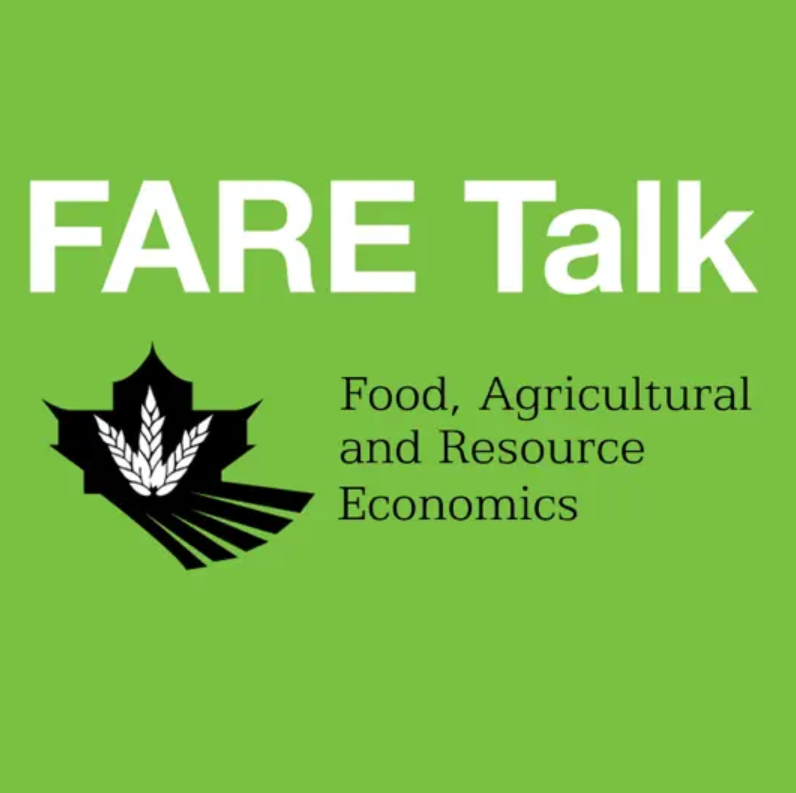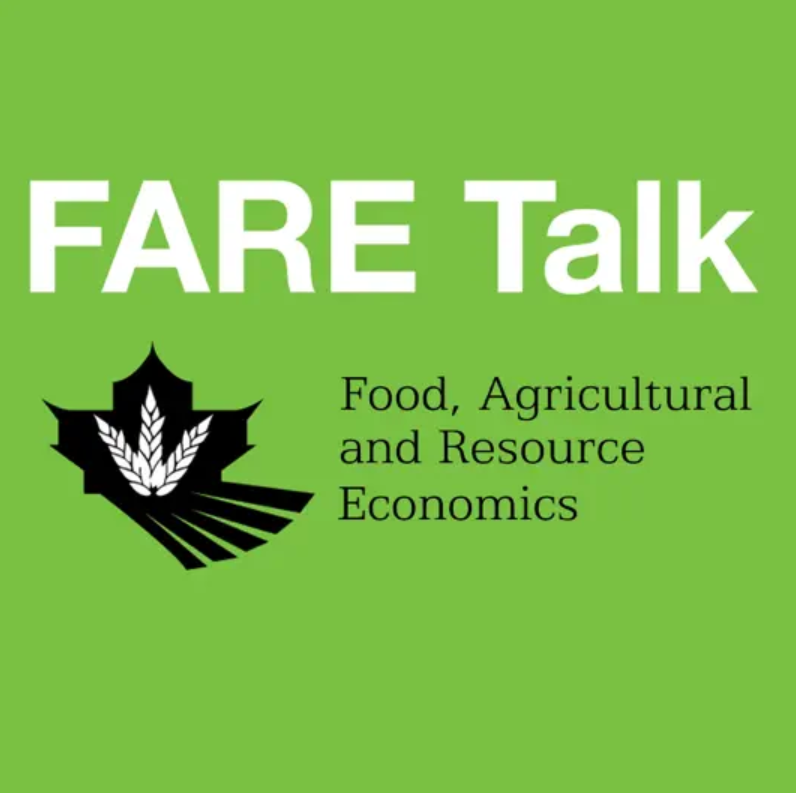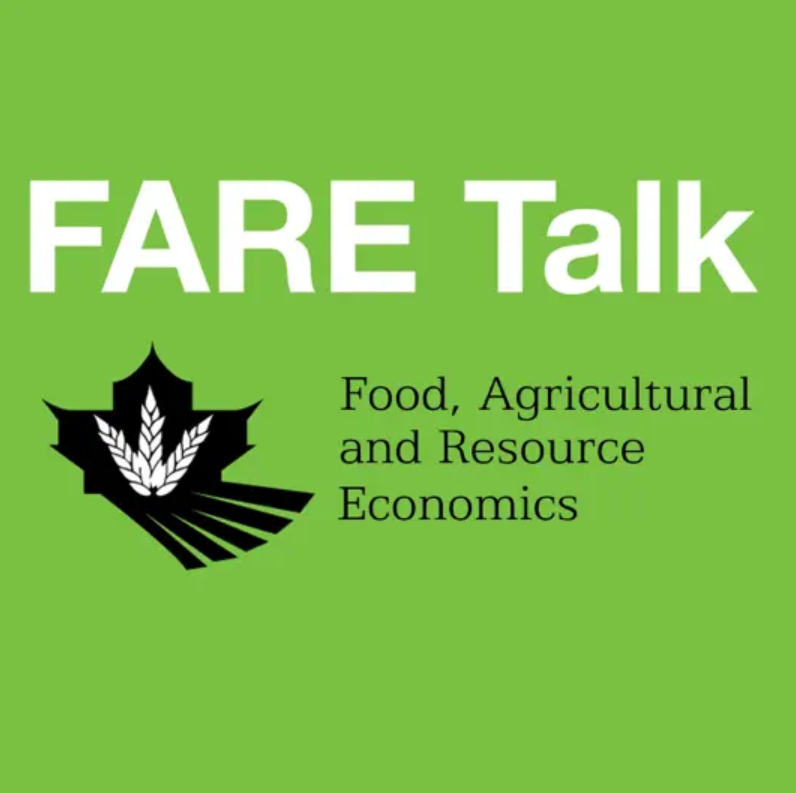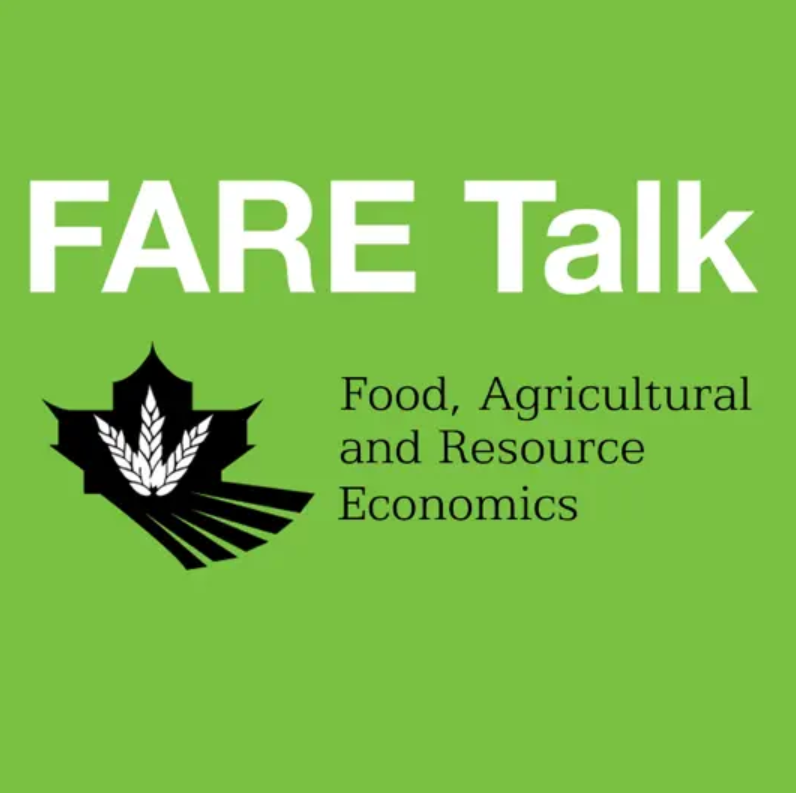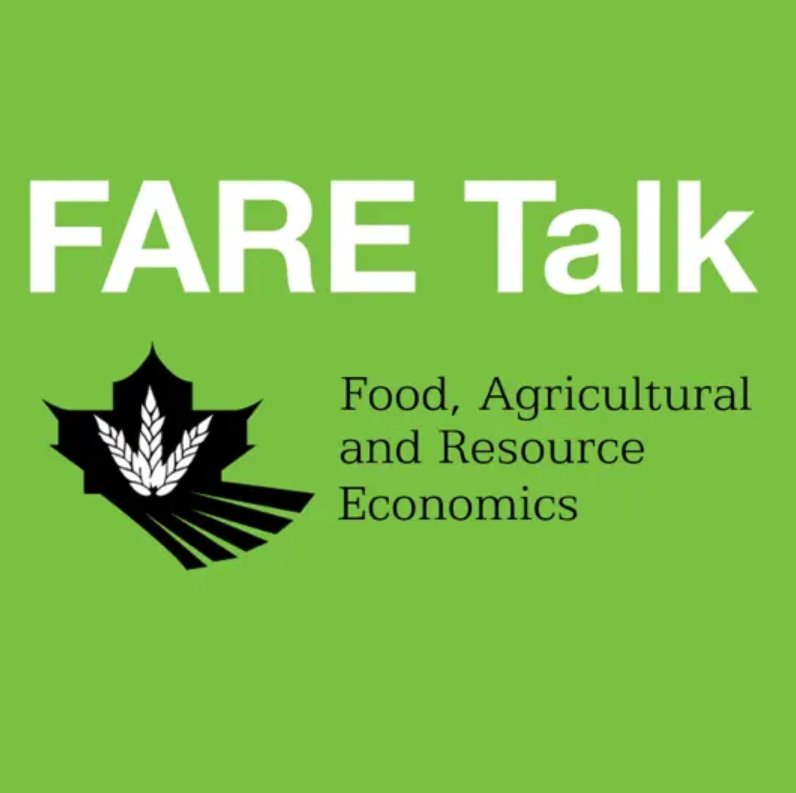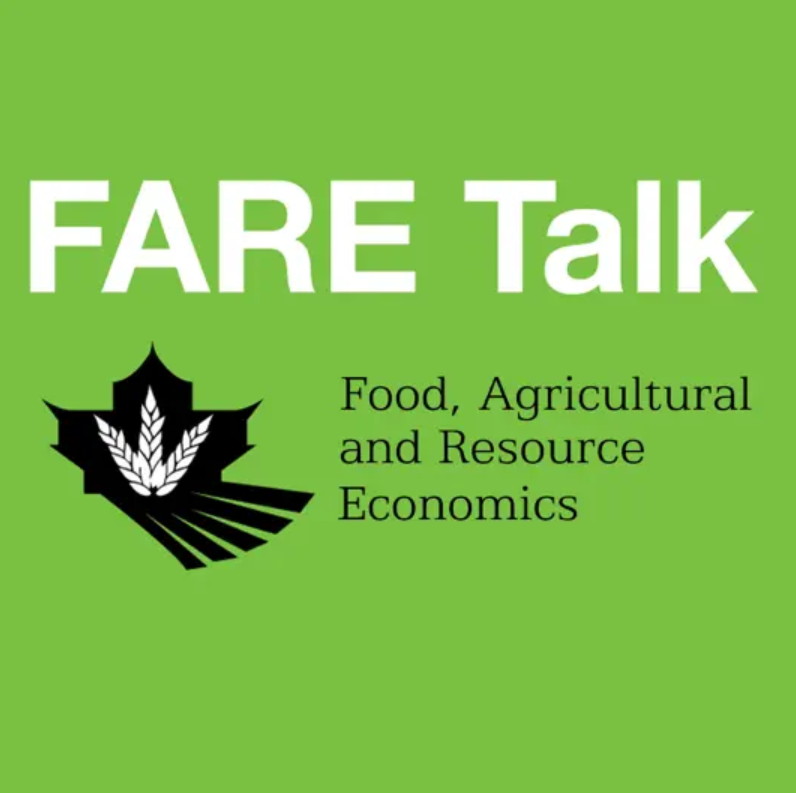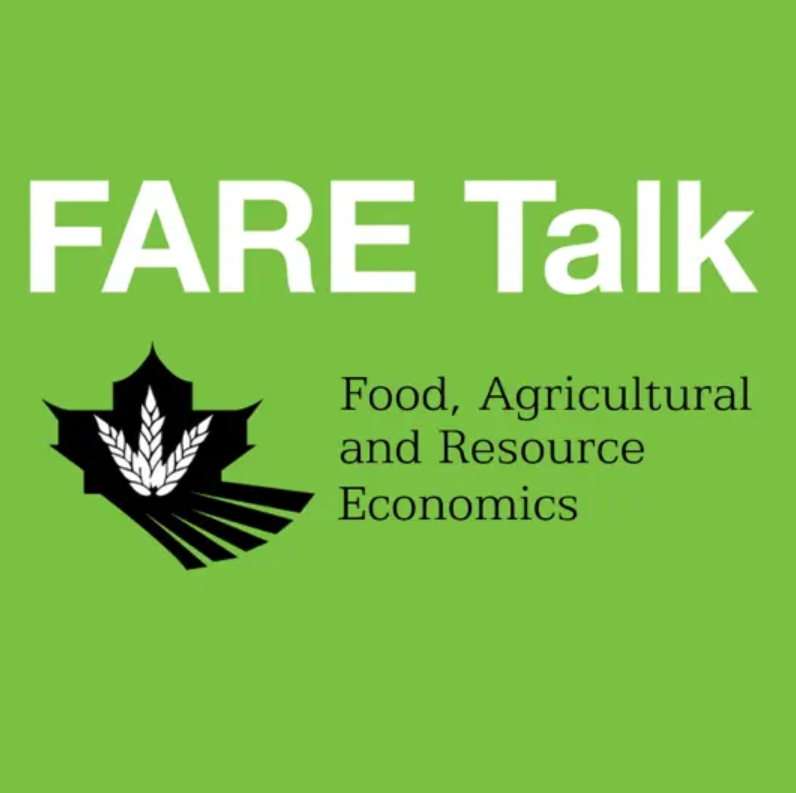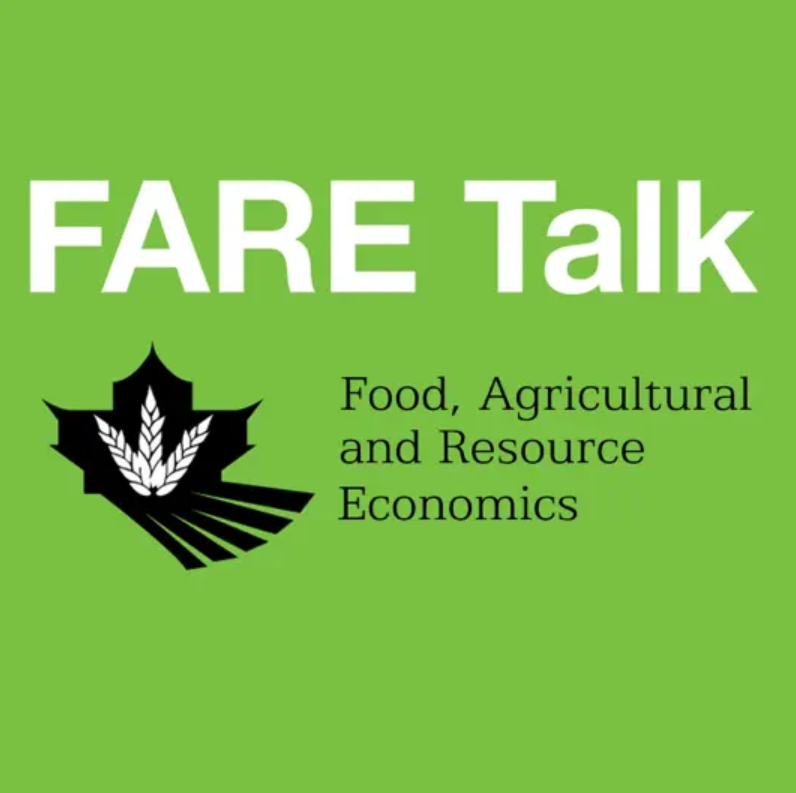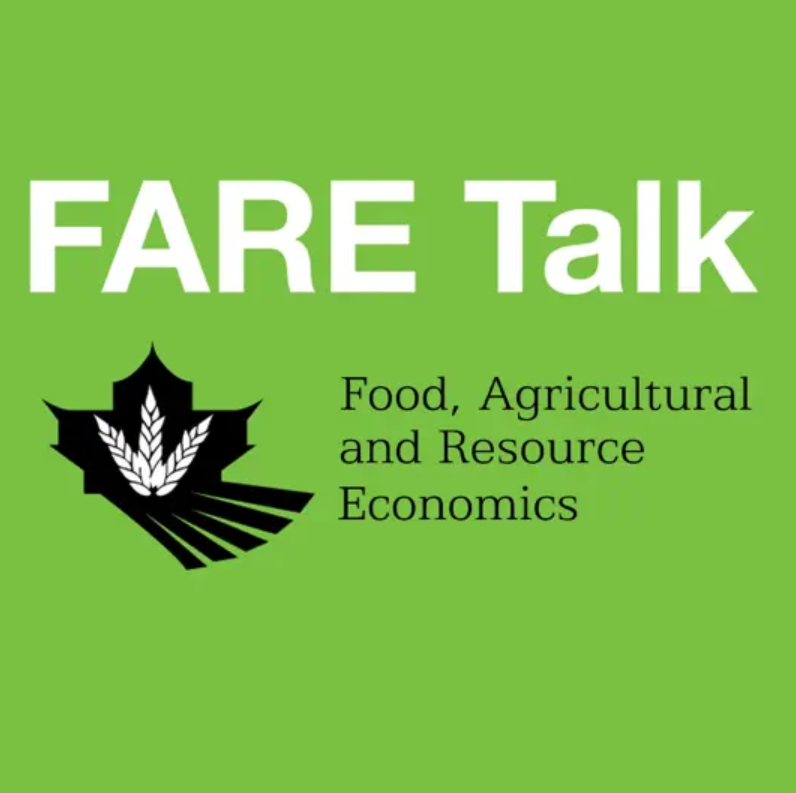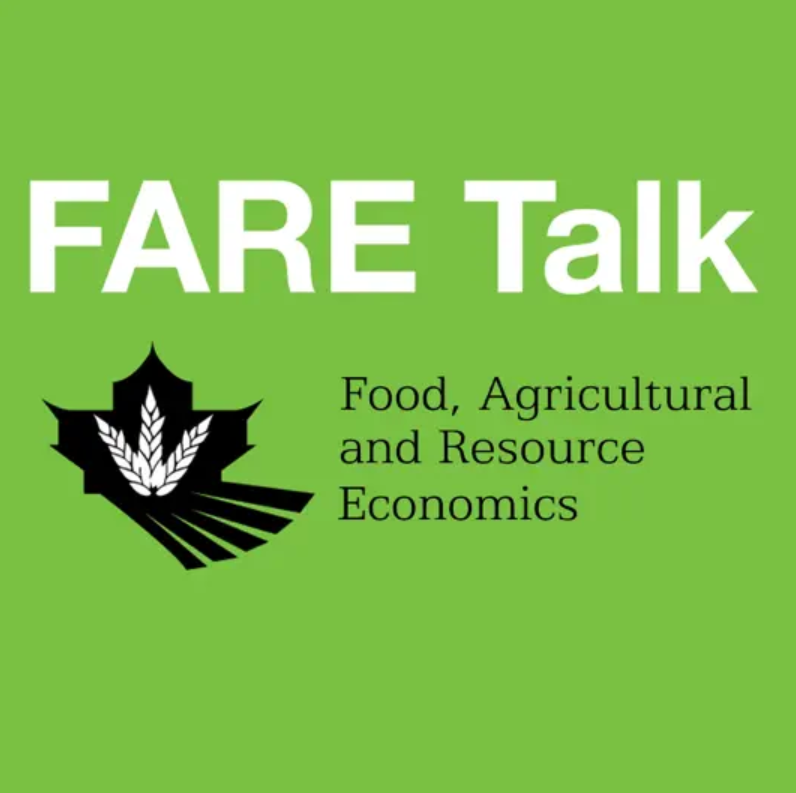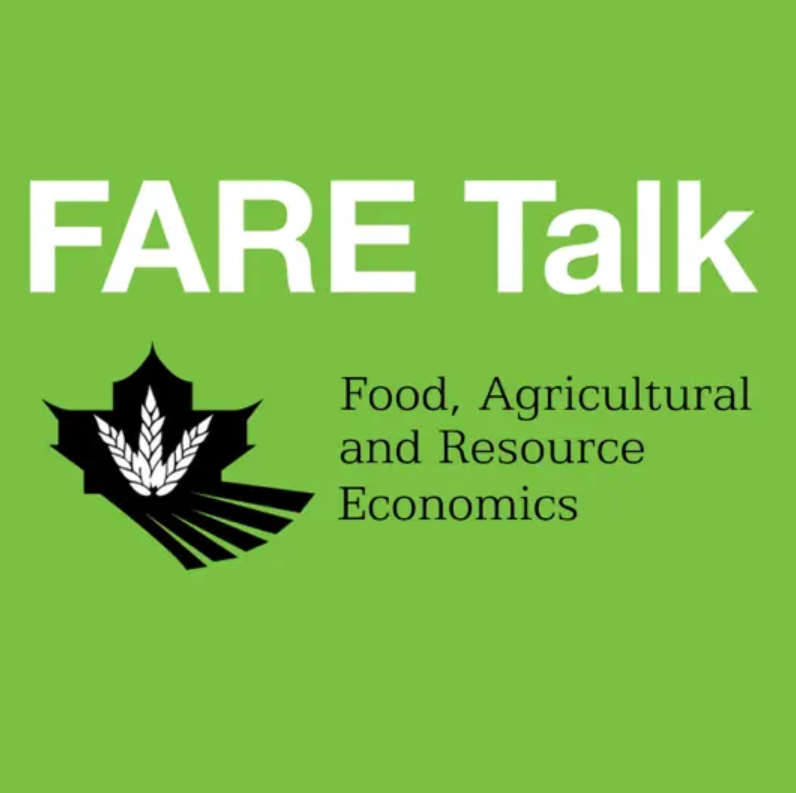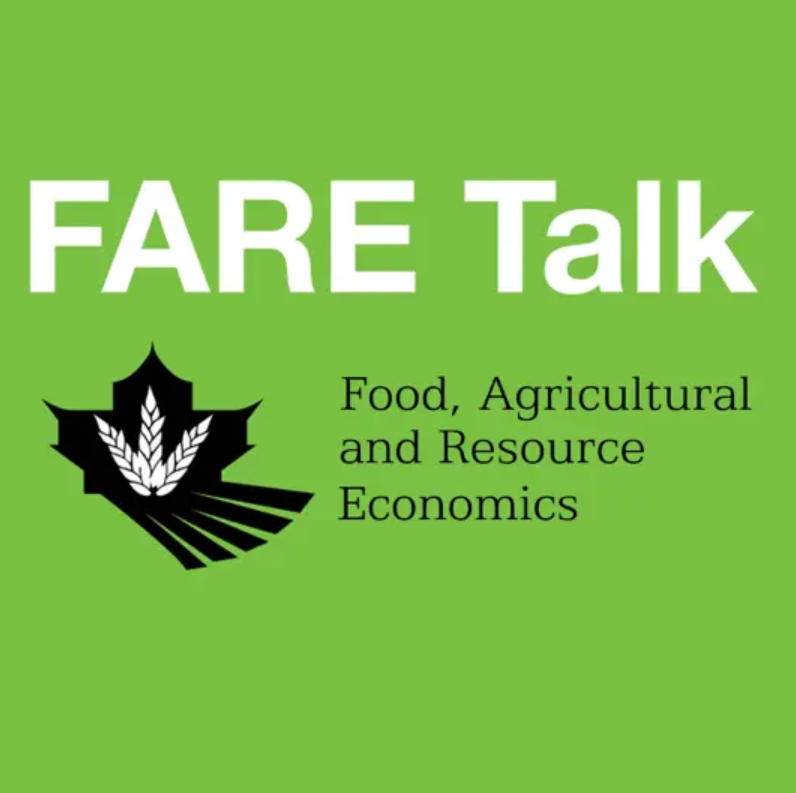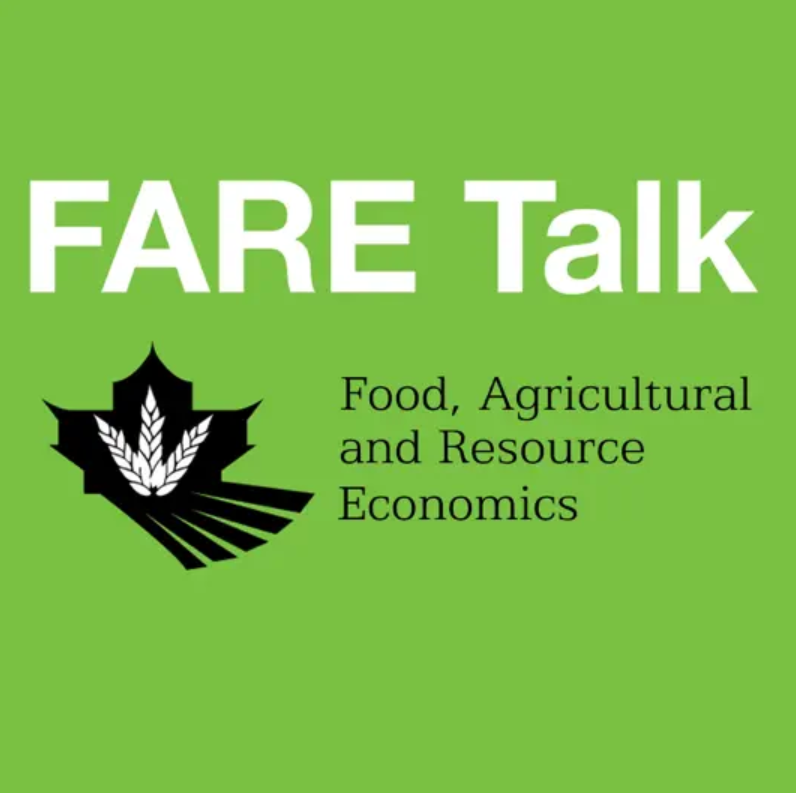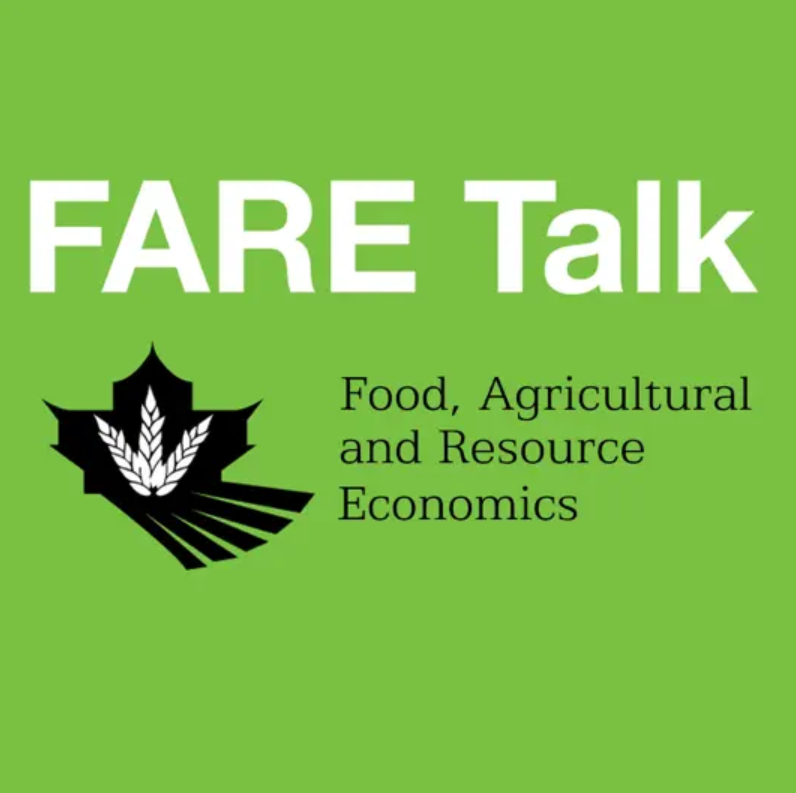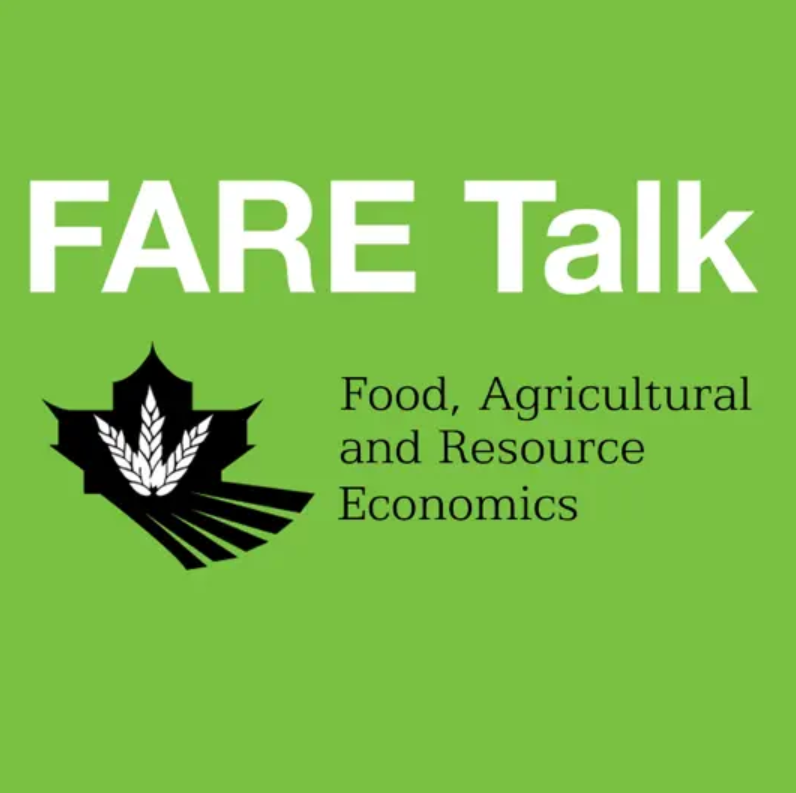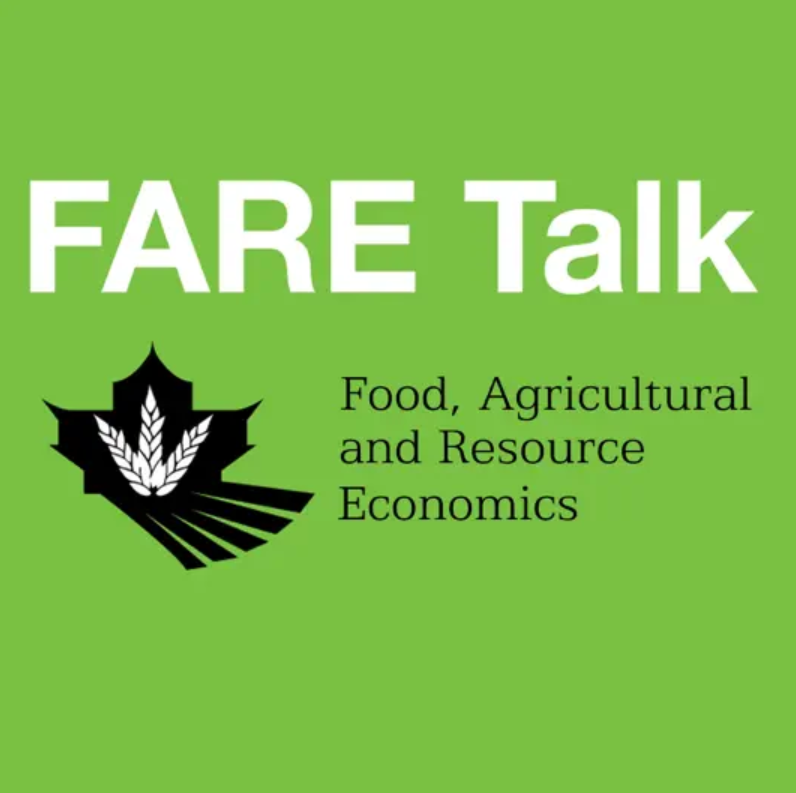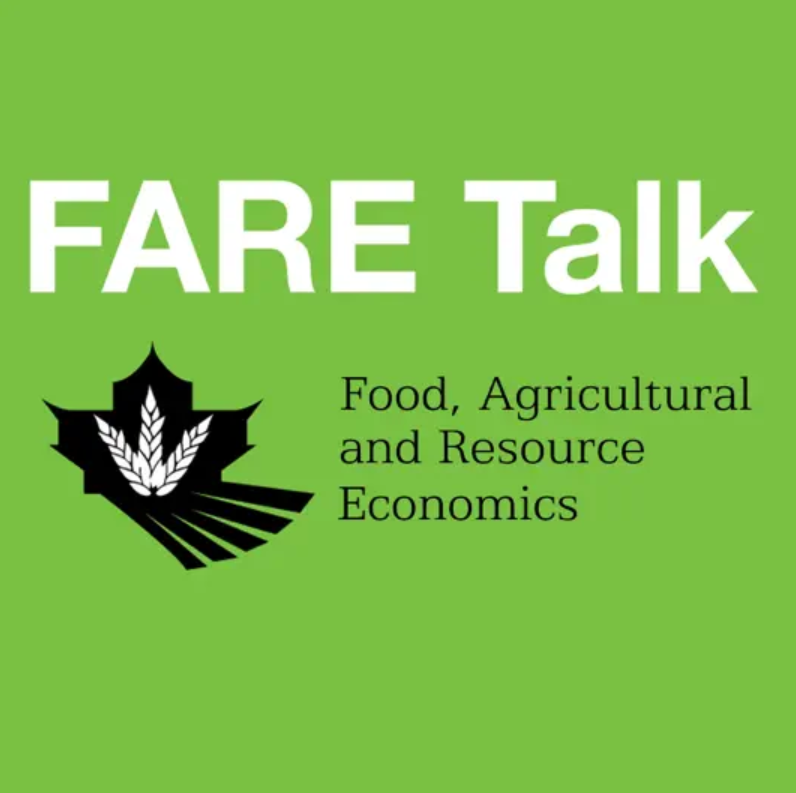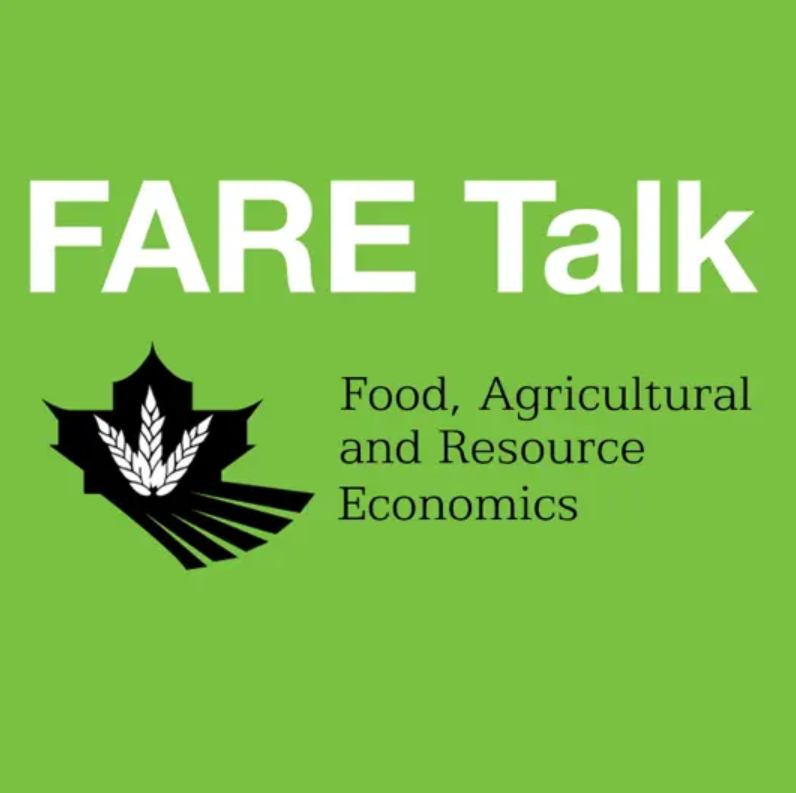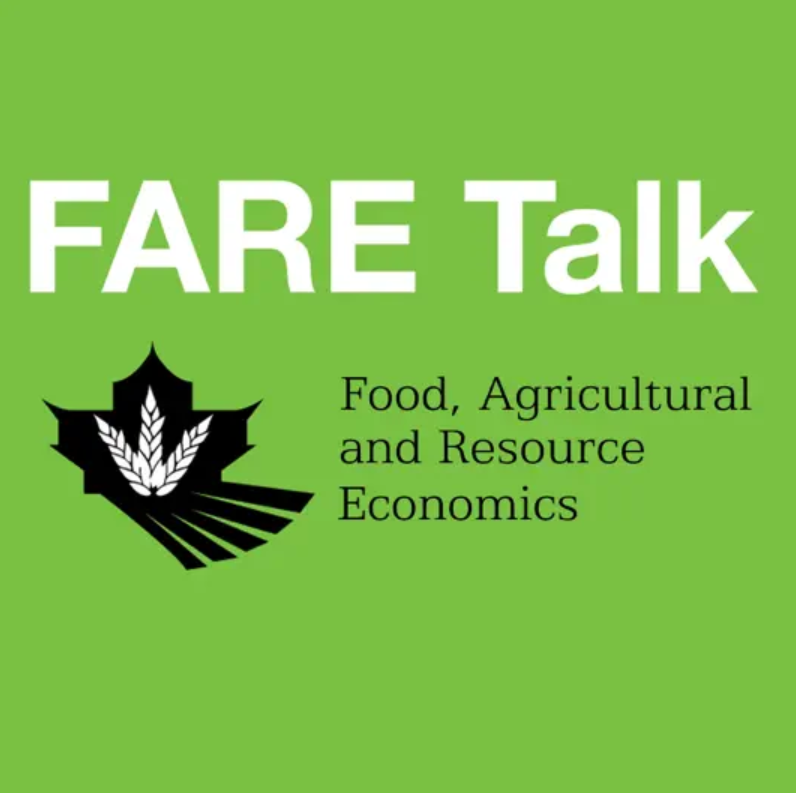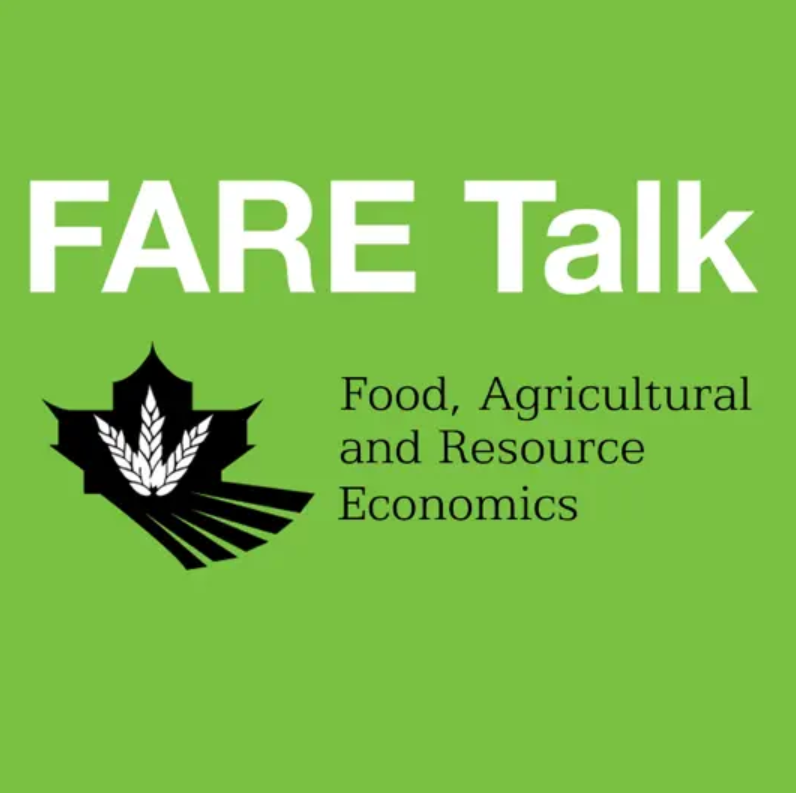The U.S. Farm Bill: Past, Present and Future Issues - August 19, 2013
Description
In this podcast David and I discuss the U.S. farm bill. He reviews the history of U.S. farm bills and the current political setting surrounding efforts to pass a farm bill in 2013.
Transcript
[0:05 ] Brady: Welcome to FARE Talk, where we set out to provide enduring discussions on contemporary topics relevant to our economy, with particular emphasis on food, agriculture and the environment. My name is Brady Deaton Jr. of the Department of Food, Agriculture and Resource Economics at the University of Guelph. I'll be your host.
[0:22 ] [Music fades out, ends.]
[0:25 ] Brady: Today I'll be talking about the U.S. Farm Bill with David Schweikhardt, professor of agricultural, food and resource economics at Michigan State University. David, welcome to FARE Talk.
David: Thank you.
[0:37 ] Brady: David, I want to talk about the current setting and the current dynamics around the U.S. Farm Bill, but perhaps before we start that, for this audience, tell us a little bit about kind of what the Farm Bill is and where are it's origins.
David: Well, modern farm bills are rather large pieces of legislation. We give them the name Farm Bills as if everything that's in them had to do with farm policies directly at the farm level. But over time, farm bills have become very comprehensive in that they include a lot of different programs. They do of course include commodity programs, price supports and other programs for farmers. They include conservation programs for farmers that make payments for certain conservation and resource preserving practices. But it also includes a wide variety of other topics, all the way from nutrition programs such as the supplemental nutrition and assistance program, SNAP program, used to be called to Food Stamp program which is basically an income supplement for lower income persons. That was added in 1973. You have programs like Women, Infants and Children which is a nutrition program aimed at pregnant and mothers, pregnant mothers, and at children and infants. We have school lunch programs, which are aimed at feeding of school aged children. We have some elderly feeding programs, we have farmers’ market programs. Much of it is related to food but it actually encompasses many different parts of what we might call the food system, which includes everything from the input supply level all the way up to the retail level. And so there, we call the Farm Bill basically is a historical shorthand, but we, it encompasses much more than simply the farm level.
[3:00 ] Brady: Alright, and these, you know, the origin, this is a twentieth century, in the 1930s this emerges, or?
David: Right. The first Farm Bill was passed in 1933. It included basically two elements, price support programs for farmers and supply control, acreage control programs. And it had one simple objective; it had the objective of increasing farm income. That was the start of the policy, that was the end of the policy. So it was entirely focused around the farm. That continued basically through the late 1960s. In 1973 we had a significant change, we still had the programs for farmers, they were converted into income support payments rather than price supports in 1973, but the 73 farm bill was the first farm bill that included the food stamp program on a national basis, which again, is the forerunner of today's SNAP program and it's an income supplement essentially for lower income persons. So, in 73 we combined farm programs and nutrition programs. Then in the 80s we added several environmental and conservation programs aimed at a variety of environmental problems associated with agricultural production. Then in the 90s we added even more programs ranging from, you'll see amendments in the 1996 farm bill dealing with a variety of animal welfare issues. Crop insurance then in the 2000s began to replace or exist alongside price supports for farmers. And so, over time, this thing evolved basically in the same direction as society evolved. We added policy targets because society added policy targets. The first policy target back in 33 was a simple one, increase farm income. By the 2000s it had become increase farm income, but don't have too much effect on consumer prices, support incomes and food consumption for lower income persons, deal with a limited set of animal welfare issues. In economists’ lingo, we added an increasing number of policy targets. Now there's an old rule in economics called the Tinbergen rule, and the Tinbergen rule says that you have to have at least as many policy tools as you have policy targets. That no one, that if you have more than two policy targets you cannot hit both targets any more than you can hit two birds with one stone. And if you get to the 2000s where we have 5, 6, 10 or more policy targets, you're going to have a larger number of policy tools and it becomes a much more complex piece of legislation. So over time this has been a matter of legislation that has gotten larger in its scope because the problems that society cares about have gotten larger.
[6:57 ] Brady: Alright, and so normally these bills are passed every five years, but we're not in normal times now. What's going on right now?
David: Well out last farm bill was in 2008 and it was a 4 year bill, and as you noted, we usually write these bills for four or five years. So it's a four year bill, and so we were supposed to rewrite it in 2012. In 2012, the Senate agriculture committee passed a farm bill, and the entire Senate then took that bill up and passed it largely unchanged from what the Senate ag committee had passed. So the Senate got their job done in 2012. The House agriculture committee passed a bill in the middle of 2012 and the leadership of the House, the Republican leadership of the House never brought that bill to the floor. Why that was, we can go into a bit later, but they never even brought that bill to the floor for votes. So as we reached December of 2012, Congress passed a one-year extension as part of a larger budget package. We called it the fiscal cliff back in December of 2012. So there's a one-year extension. That brought us into 2013. In 2013, the Senate once again passed a bill. The House voted on what was essentially the 2012 House bill and it was defeated when a large number of Republican members voted against the bill because they considered the cuts in nutrition programs, especially cuts in the SNAP program to be too small. After that defeat on the House floor, the House leadership brought back to the House floor a bill which includes only farm programs, did not include any nutrition component. That bill passed on a very narrow vote, vote of about; I believe it was 216 to 208. Virtually no Democrat, very few Democrats voted for that bill, a handful of them did. So it's basically along party lines. So where we stand now is the Senate has passed a Farm Bill that includes both farm programs and nutrition programs. The House has passed a bill that includes only farm programs, does not include any nutrition programs. Now normally when both Houses have passed a bill, they then go to a conference committee that works out the differences between the two Houses, and they produce a final bill that is sent back to both Houses for final vote. That conference committee formation has not occurred and Congress is on vacation until after Labour Day. Speaker Boehner is saying that the House will take up a nutrition bill immediately after Labour Day. I have my doubts that that will happen, but we can talk about that later.
[10:47 ] Brady: I want to get into some dimensions of this gridlock we talked about when we were recently together in Washington, D.C., about your thinking about a way of characterizing this gridlock. But before I do, just give me an idea of what we're talking about in terms of size of the farm bill. Do you know roughly about, you know, how much money are we talking about here?
David: Well over, they score farm bill over a ten year period even though it only, legislatively, exists for a five year period. And, the House version, the version passed by the House ag committee and the Senate version both cost in the range, of say, 950 billion dollars over ten years [Brady: Okay]. So, we're talking about, Department of Agriculture budget then that would be somewhere in the range of 100 billion a year.
[11:51 ] Brady: Alright, and let's compare that to maybe the budget, the defense budget. I imagine it's much smaller than the defense budget. But how does it, so I'm just in order to kind of put it in some perspective, it's smaller than the defense budget, but it's bigger than or comparable to, what budget might it be comparable to?
David: Right. Well, if you look at the U.S. budget it's actually pretty simple. Defense, social security and entitlement programs such as Medicare take up about 75% of the U.S. budget. Everything else the government does is about 25%. If you look at farm programs, commodity programs plus crop insurance, that equals maybe 20 billion a year. Now that 20 billion a year, in addition to that 20 billion a year, then you'll have about 80 billion dollars mostly for the food stamp program. That's roughly the way the budget breaks down. If we look at that 20 billion we spend on farm programs, that is significantly larger than the entire budget of an agency like the EPA, the environmental protection agency. It's significantly larger than the budget of the Federal Bureau of Investigation, the FBI. So we're talking about a significant amount of money here in comparison to a lot of other agencies in the government. We're talking, it is small relative to defense or social security or Medicare, but it

